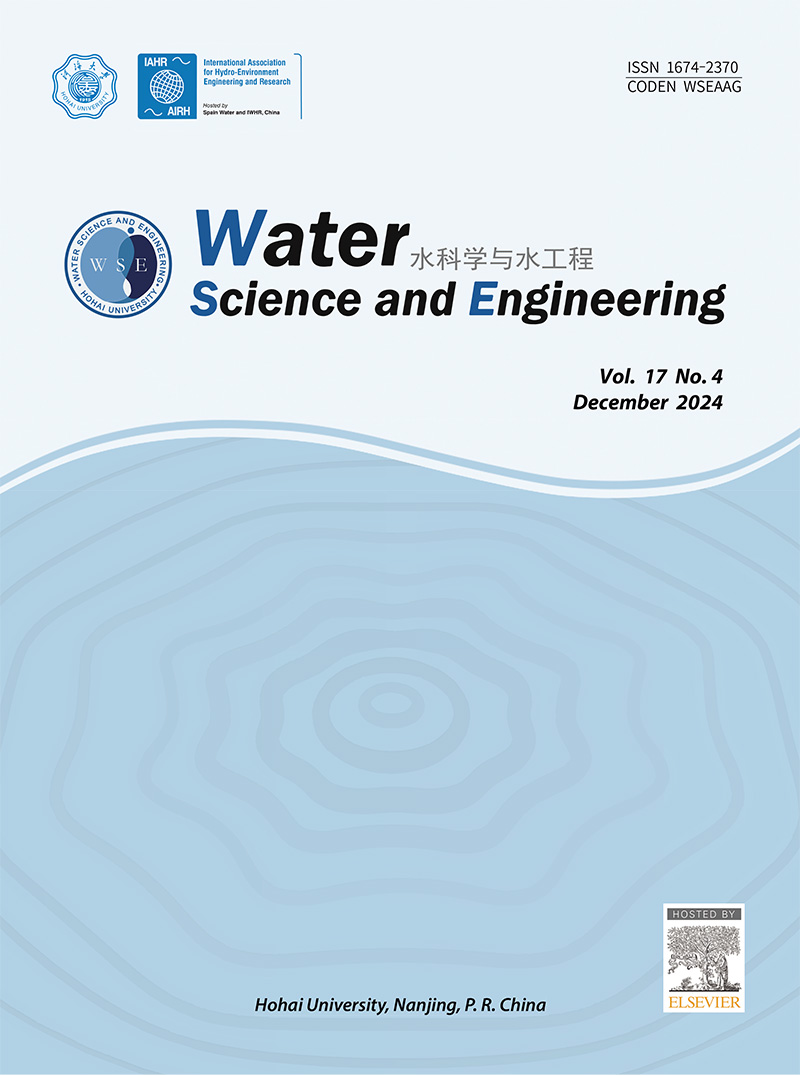Optimising a novel biofilm-based process using Neurospora discreta for enhanced treatment of lignin-rich wastewater
IF 4.3
Q1 WATER RESOURCES
引用次数: 0
Abstract
Paper and pulp mills generate substantial volumes of wastewater containing lignin-derived compounds that are challenging to degrade using conventional wastewater treatment methods. This study presents a novel biofilm-based process for enhanced lignin removal in wastewater using the fungus Neurospora discreta, which effectively degrades lignin and forms robust biofilms at the air–liquid interface under specific conditions. The process was optimised using the Taguchi design of experiments approach, and three factors including pH, copper sulphate concentration, and trace element concentration were evaluated at three levels. Experimental data were analysed against three responses: lignin degradation efficiency and the activities of two ligninolytic enzymes (polyphenol oxidase and versatile peroxidase). The results indicated that wastewater pH was the most significant parameter affecting lignin degradation efficiency and enzyme activities. Over 70% lignin degradation was achieved at pH levels of 5 and 6 with copper sulphate concentrations above 4 mg/L, while degradation efficiency drastically dropped to 45% at a pH value of 7. Reversed-phase high-performance liquid chromatography analysis demonstrated the effects of the three factors on the polar and non-polar components of lignin in wastewater, revealing a clear decrease in all peak areas after treatment. Additionally, significant relationships were observed between biofilm properties (including porosity, water retention value, polysaccharide content, and protein content) and lignin removal efficiency. This study also reported for the first time the presence of versatile peroxidase, a ligninolytic enzyme, in Neurospora sp.
优化一种新的基于生物膜的工艺,利用离散神经孢子菌加强处理富含木质素的废水
造纸和纸浆厂产生大量含有木质素衍生化合物的废水,这些化合物很难用传统的废水处理方法降解。本研究提出了一种新的基于生物膜的工艺,利用真菌离散神经孢子菌(Neurospora discreta),在特定条件下有效降解木质素并在气液界面形成坚固的生物膜,以增强废水中的木质素去除。采用田口实验设计法对工艺进行优化,并对pH、硫酸铜浓度、微量元素浓度三个因素进行了三个水平的评价。实验数据分析了三个响应:木质素降解效率和两种木质素降解酶(多酚氧化酶和多功能过氧化物酶)的活性。结果表明,废水pH是影响木质素降解效率和酶活性的最显著参数。当pH值为5和6,硫酸铜浓度大于4 mg/L时,木质素的降解率达到70%以上,而当pH值为7时,木质素的降解率急剧下降至45%。反相高效液相色谱分析证实了这三个因素对废水中木质素极性和非极性组分的影响,发现处理后所有峰区都明显下降。此外,生物膜特性(包括孔隙度、保水值、多糖含量和蛋白质含量)与木质素去除效率之间存在显著关系。本研究还首次报道了木素水解酶——多用途过氧化物酶在神经孢子菌中的存在。
本文章由计算机程序翻译,如有差异,请以英文原文为准。
求助全文
约1分钟内获得全文
求助全文
来源期刊

Water science and engineering
WATER RESOURCES-
CiteScore
6.60
自引率
5.00%
发文量
573
审稿时长
50 weeks
期刊介绍:
Water Science and Engineering journal is an international, peer-reviewed research publication covering new concepts, theories, methods, and techniques related to water issues. The journal aims to publish research that helps advance the theoretical and practical understanding of water resources, aquatic environment, aquatic ecology, and water engineering, with emphases placed on the innovation and applicability of science and technology in large-scale hydropower project construction, large river and lake regulation, inter-basin water transfer, hydroelectric energy development, ecological restoration, the development of new materials, and sustainable utilization of water resources.
 求助内容:
求助内容: 应助结果提醒方式:
应助结果提醒方式:


